Pruning grapes on the gazebo
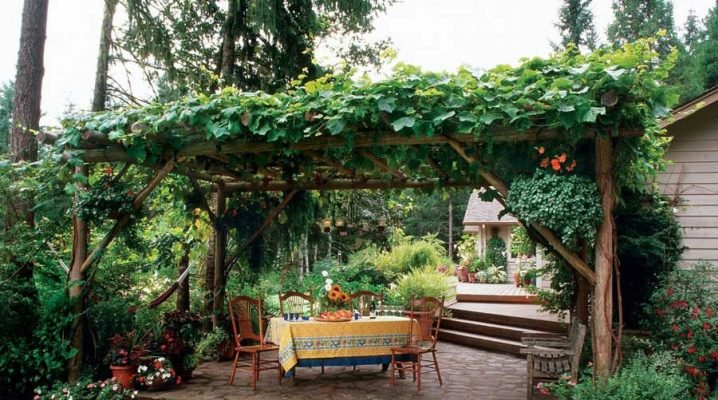
The formation of growing grape shoots is an obligatory work, without which the grapes will grow chaotically and their yield will decrease. Unlike wild grapes, which can even grow in cracks in the rock, cultivated varieties require a special approach.
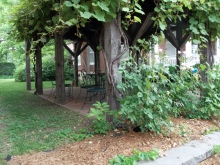
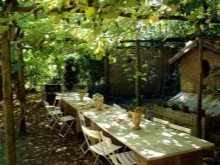
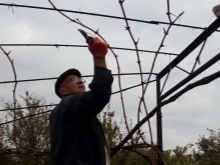
Appointment
"Arbor" shaping of vines refers to non-covering methods. The vineyard is not isolated for the winter, with the exception of bush varieties that do not climb more than a meter and a half. In order to protect it from freezing, only insulation (hilling) of each vine is carried out. Since the grape varieties for covered yards and gazebos climb high, it is unrealistic to close all the main branches of each vine with agrofibre.
However, to prevent diseases and freezing of the upper branches, they are formed every year, cutting off excess after the end of the growing season.
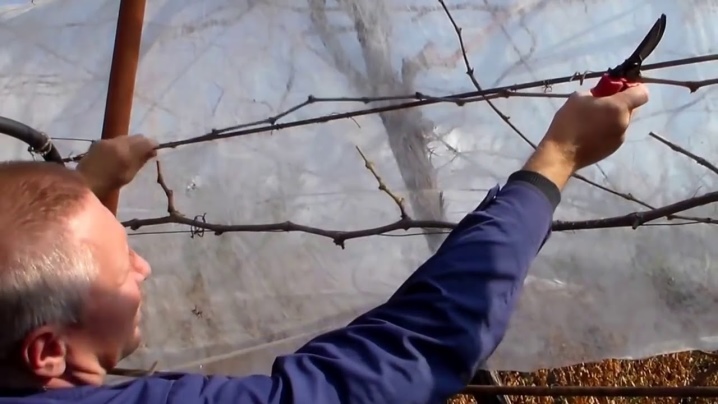
Basic methods of pruning vines on a gazebo
So, the gazebo is built, and the vines are planted. In 2-3 years they reached the roof of the gazebo - and closed most of it. For the correct pruning of the shoots, several methods are used, developed by the best winegrowers - real masters of their craft. The best, in their opinion, the formation of grape thickets is cordon: it is specially designed for arbors.
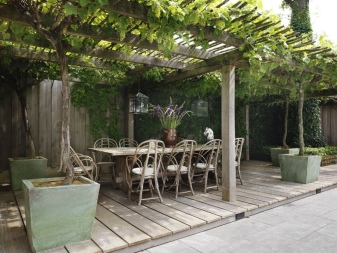
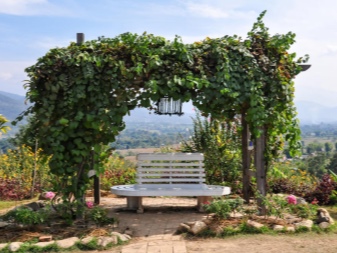
Vertical cordon
The advantages of the method are high productivity. The disadvantage is that the most fruitful tiers are the upper ones, which makes it difficult to harvest without a stepladder. The vertical cordon is formed as follows.
They choose shoots growing vertically - without strong distortions and lush horizontal crowns. Shoots are cut to the 6th bud, counting from the fork, in the first year. In the second year, the resulting daughter branches are cut to the 3rd bud. This is how horizontal crowns are created on a vertical vine. In the third and subsequent years, pruning of the vine along the resulting new forks is formed, pruning to the 3rd bud. Long-sleeved shaping is repeated in general the same way, but at the same time cutting can be carried out further from the nearest branches.
Vertical formation lends itself to alternation. If some shoots did not have time to grow, for example, by 2 m in the previous year, then they can be formed at different levels - for example, on the second and third wire (or reinforcing) horizontals of the gazebo.
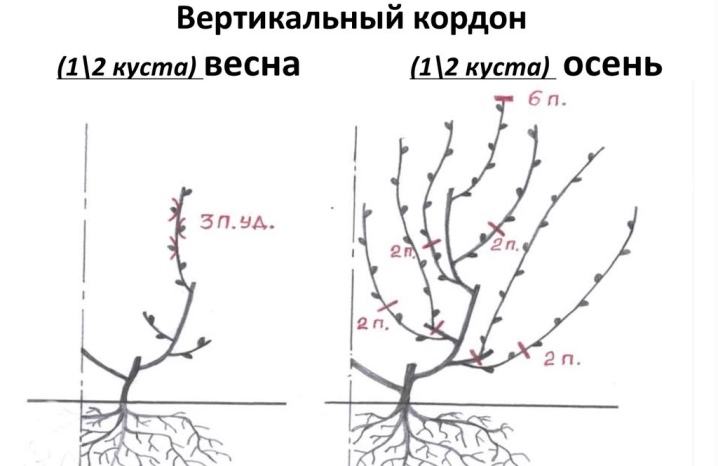
Horizontal cordon
The horizontal cordon differs from the vertical cordon in that the vine is launched along the lowest thin crossbar connecting the pillars and pillars of the arbor. From it, branches grow vertically upward, which are not cut off: they, in turn, continue to grow, as if separate vertical vines were growing instead of them.
In turn, branches of the second order, growing from the vertical side branches, are cut off to the 5th or 6th bud at each fork. The resulting thickets of grapes look extremely neat and delight their owner with a good harvest from year to year.

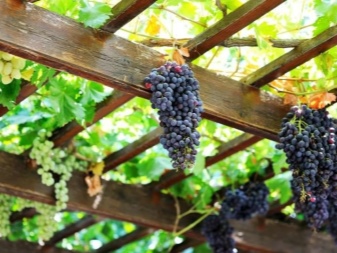
The height of the first wire or piece of reinforcement, along which the horizontally directed vine goes, should not be located below 30 cm from the ground. The advantage of the horizontal cordon formation of the vineyard is the ease in covering work, if the shelter of the vines is still required at the onset of abnormally severe cold snaps. Harvesting is easier as fertile levels begin at a height below 1 m above the ground. The method of forming a horizontal cordon has step-by-step instructions.
- For the first and second year Grow a strong, powerful branch with a length of at least 2 m. If there is a shortage of length, reach this minimum in the second year.
- In the second year, tilt the shoot parallel to the ground., forming a smooth fold in the drop zone with a height of 40-70 cm from the ground. Mark the buds you want, for example with a construction marker. The first should be located on a line that is strictly horizontal and parallel to the ground. The second and subsequent kidneys are located every half a meter from each other. Cut the rest of the buds to the base - too many branches on a horizontal vine are useless, the vine does not have enough nutrients for all the nutrients. For example, your work sequence is the 1st, 6th, 11th, 16th, 21st (etc.) kidneys. The rest should be removed.
- Cut off the resulting stepchildren, preventing them from growing. They start to grow in the spring and continue to appear in the summer. The vine growers' stepchild is the shoot that grows next to the main leaf from the bud "sleeping" up to this point, which should have bloomed next year.
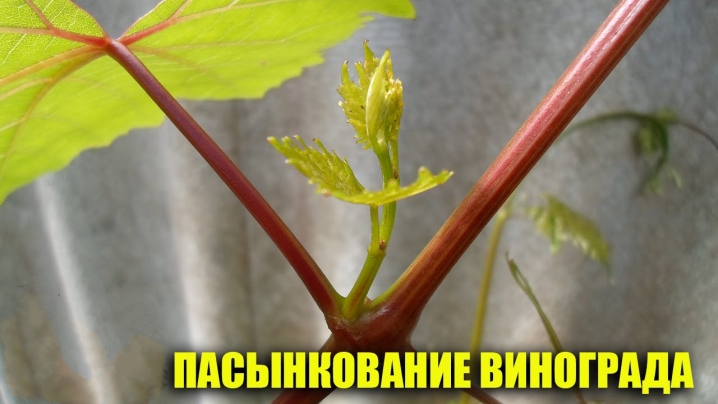
For the 3rd year, the order of growth of the grape bush is set. The vine-bush reaches the level of abundant fruiting. Do not forget to cut off the tops of the stems that are standing straight - they will not grow further, which means they are useless. In the 4th and subsequent years, the vineyard is fully formed.
From this moment, pruning is done if necessary, for example, diseased and dried branches and leaves are cut, and fruiting, with proper and accurate care, will achieve almost maximum results.
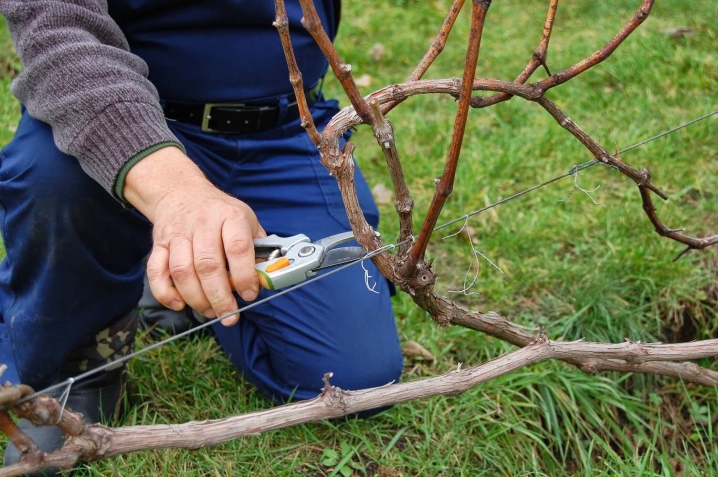
Fan cordon
The essence of the fan cordoning (formation) of the vineyard on the gazebo is as follows.
- We grow two oppositely directed horizontal branches - from the trunk of the bush. The branching is performed under the first horizontal covering of the arbor. Let the branches grow horizontally.
- When the branches have grown, we mark the buds according to the aforementioned progression - "one through five". Cut off the rest of the kidneys, except for the marked ones.
- Let the branches grow from the marked buds. The resulting vertical branches of the second order.
- We let each child branch branch out according to the principle "every third bud". We remove the rest of the kidneys.

Result: three years of active growth - and the vines are formed. The vineyard bears fruit successfully.
Combined cordoning
The essence of the combined method is as follows.
- Let the main shoot grow to a height of 1-1.5 m. This is the level of the third horizontal constriction of the arbor.
- As it grows, when the shoot grows back, we tilt it smoothly. We let him catch his "antennae" on this horizontal line. It continues to grow already parallel to the ground.
- When the shoot grows, we repeat the marking, trimming unnecessary buds, as in the horizontal "cordon". We give the left buds to let the daughter branches up. The rest of the actions to rearrange the buds and shoots do not change.
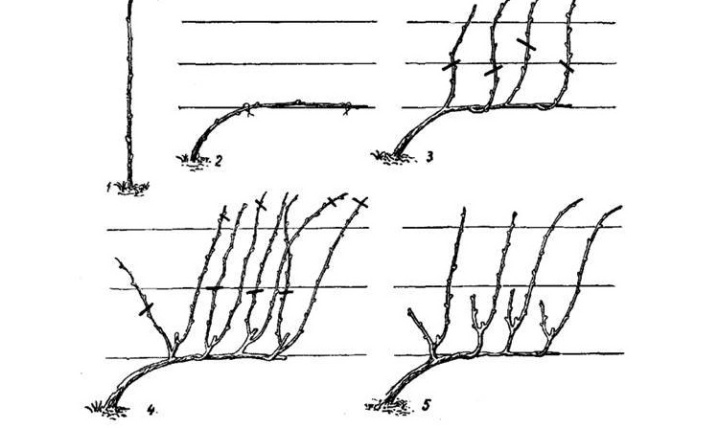
The result is that the vineyard bears fruit successfully for the 4th year. You can combine horizontal, vertical and fan cordoning - but the vines should not interfere with each other, closely intertwining shoots and thus forming a "thicket".
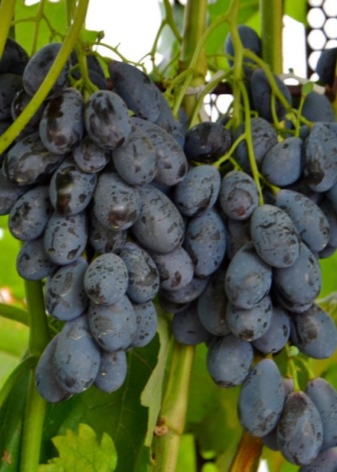
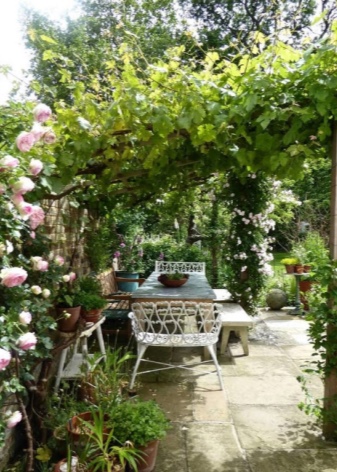
See the video for pruning grapes on the gazebo.










The comment was sent successfully.